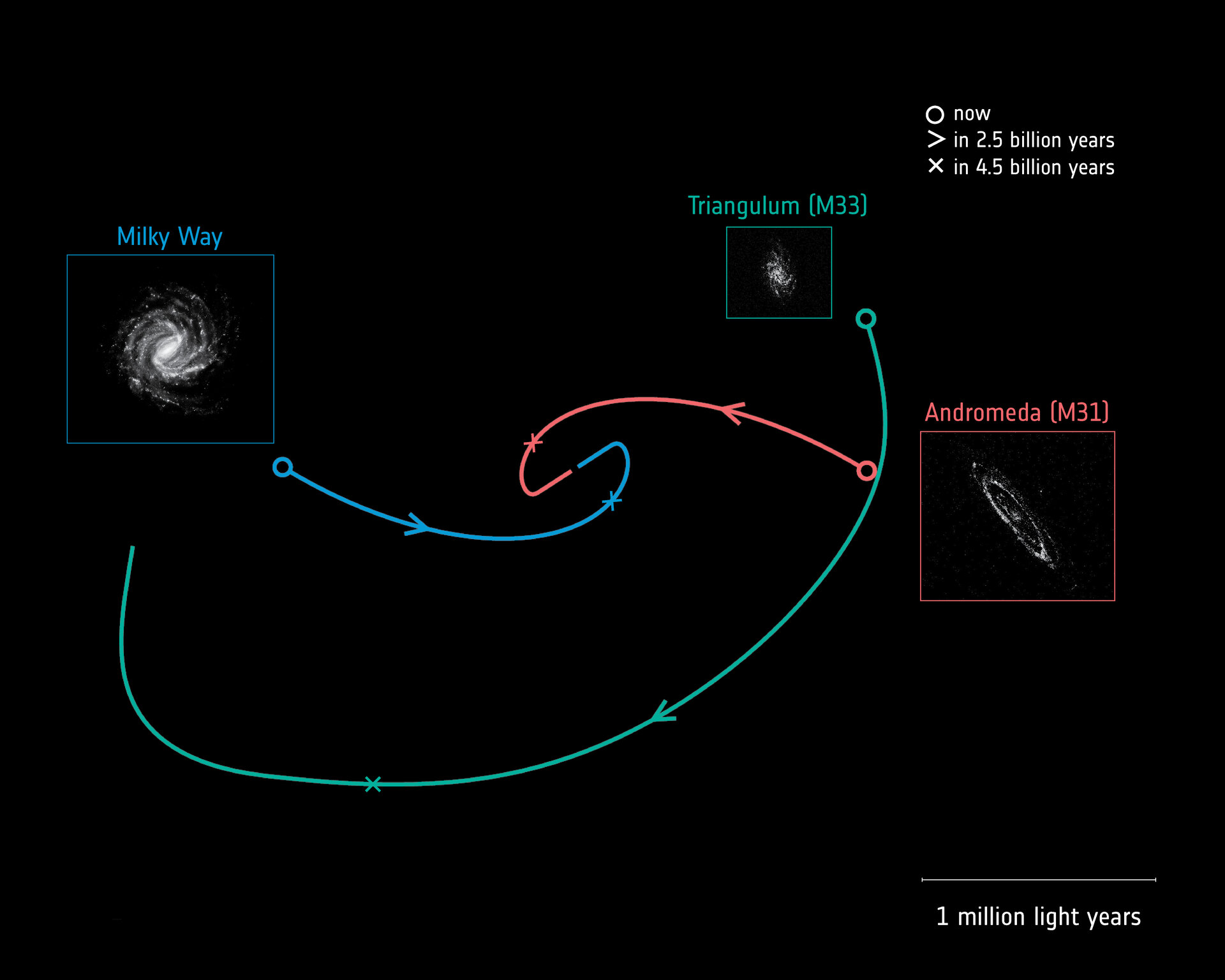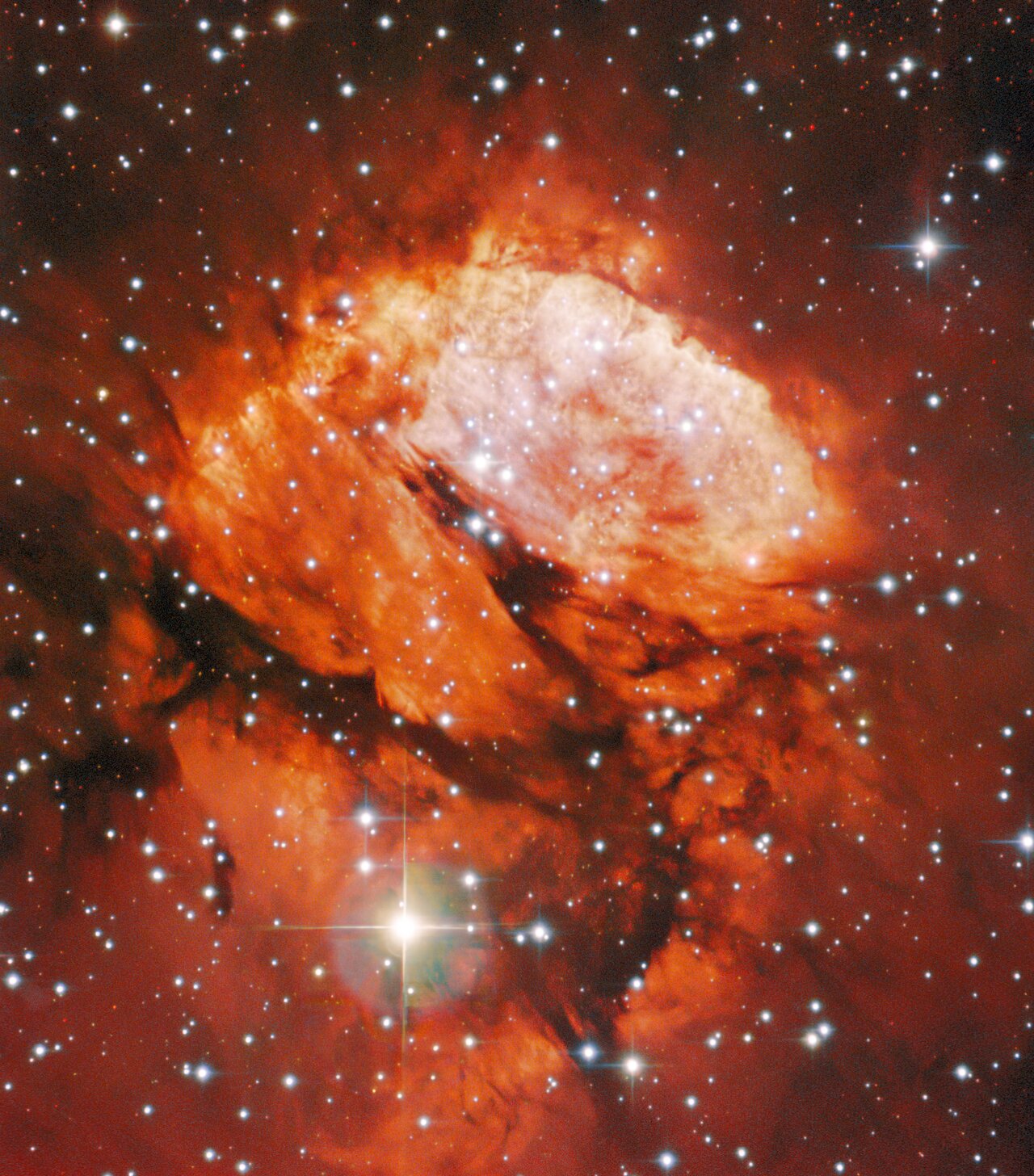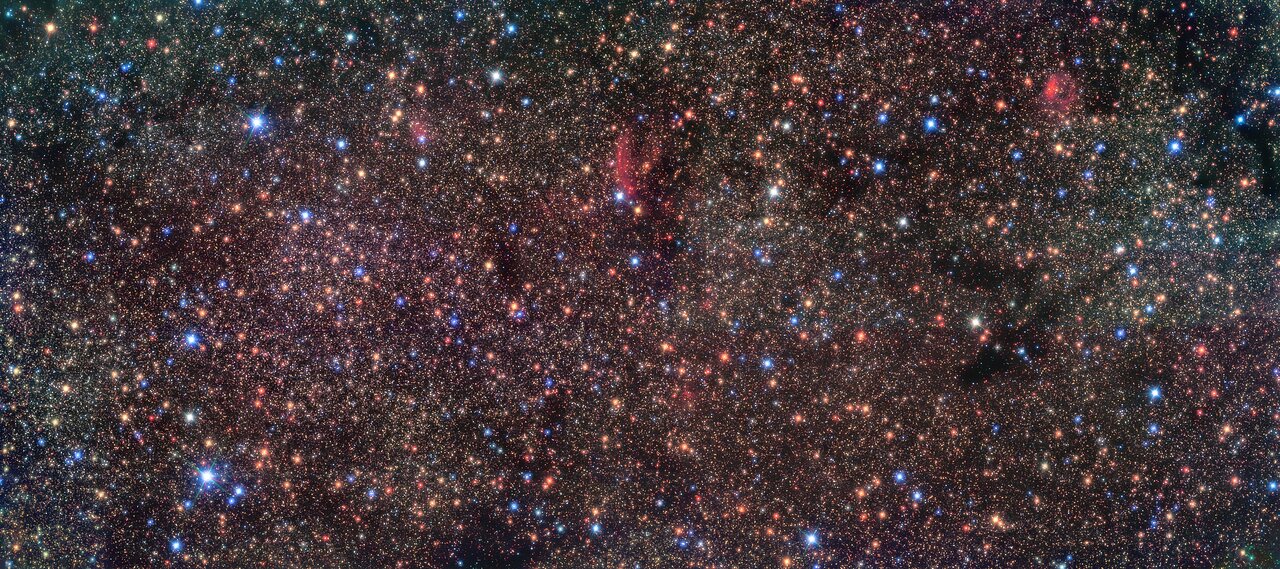ESO Photo Release | 2022 Aug 16
ESO’s Very Large Telescope (VLT) has imaged the result of a spectacular cosmic collision — the galaxy NGC 7727. This giant was born from the merger of two galaxies, an event that started around a billion years ago. At its centre lies the closest pair of supermassive black holes ever found, two objects that are destined to coalesce into an even more massive black hole.
Just as you may bump into someone on a busy street, galaxies too can bump into each other. But while galactic interactions are much more violent than a bump on a busy street, individual stars don’t generally collide since, compared to their sizes, the distances between them are very large. Rather, the galaxies dance around each other, with gravity creating tidal forces that dramatically change the look of the two dance partners. ‘Tails’ of stars, gas and dust are spun around the galaxies as they eventually form a new, merged galaxy, resulting in the disordered and beautifully asymmetrical shape that we see in NGC 7727.
The consequences of this cosmic bump are spectacularly evident in this image of the galaxy, taken with the FOcal Reducer and low dispersion Spectrograph 2 (FORS2) instrument at ESO’s VLT. While the galaxy was previously captured by another ESO telescope, this new image shows more intricate details both within the main body of the galaxy and in the faint tails around it.
In this ESO VLT image we see the tangled trails created as the two galaxies merged, stripping stars and dust from each other to create the spectacular long arms embracing NGC 7727. Parts of these arms are dotted with stars, which appear as bright blue-purplish spots in this image.
Also visible in this image are two bright points at the centre of the galaxy, another telltale sign of its dramatic past. The core of NGC 7727 still consists of the original two galactic cores, each hosting a supermassive black hole. Located about 89 million light-years away from Earth, in the constellation of Aquarius, this is the closest pair of supermassive black holes to us. ...









